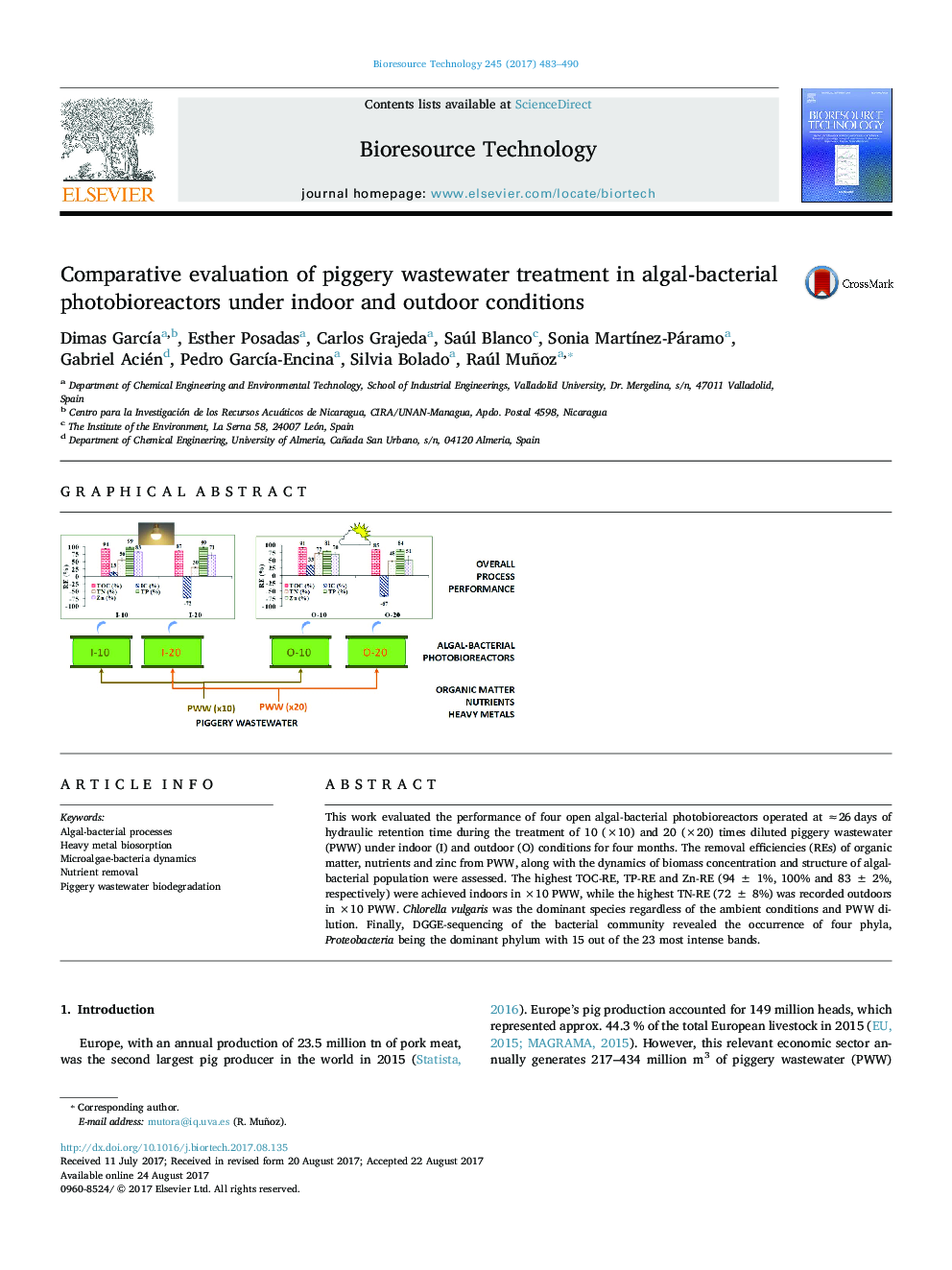| Article ID | Journal | Published Year | Pages | File Type |
|---|---|---|---|---|
| 4996777 | Bioresource Technology | 2017 | 8 Pages |
â¢Efficient PWW treatment regardless of the environmental and operational conditions.â¢Superior treatment performance at 10-fold diluted PWW (compared to 20 folds).â¢Biomass concentration at indoors and outdoors was determined by PWW dilution.â¢Chlorella vulgaris was the dominant microalga regardless of the tested conditions.â¢DGGE sequencing revealed a higher bacterial biodiversity at 10-fold diluted PWW.
This work evaluated the performance of four open algal-bacterial photobioreactors operated at â26 days of hydraulic retention time during the treatment of 10 (Ã10) and 20 (Ã20) times diluted piggery wastewater (PWW) under indoor (I) and outdoor (O) conditions for four months. The removal efficiencies (REs) of organic matter, nutrients and zinc from PWW, along with the dynamics of biomass concentration and structure of algal-bacterial population were assessed. The highest TOC-RE, TP-RE and Zn-RE (94 ± 1%, 100% and 83 ± 2%, respectively) were achieved indoors in Ã10 PWW, while the highest TN-RE (72 ± 8%) was recorded outdoors in Ã10 PWW. Chlorella vulgaris was the dominant species regardless of the ambient conditions and PWW dilution. Finally, DGGE-sequencing of the bacterial community revealed the occurrence of four phyla, Proteobacteria being the dominant phylum with 15 out of the 23 most intense bands.
Graphical abstractDownload high-res image (177KB)Download full-size image
